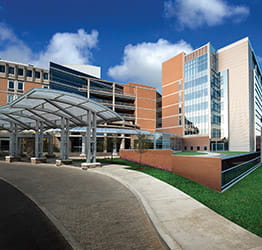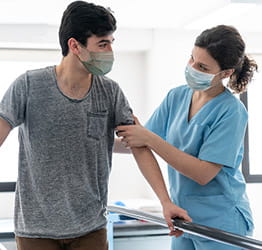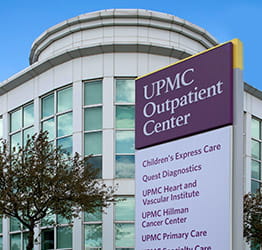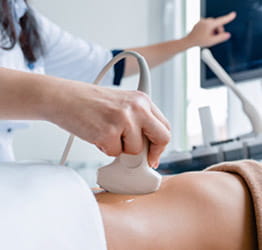Rhinoplasty is a type of plastic surgery on your nose. You might have it to change how your nose looks or functions.
Experts at the UPMC Department of Plastic Surgery can help you get your ideal shape of nose through rhinoplasty.
What Is Rhinoplasty?
A rhinoplasty or "nose job" is a technique to reshape the nose, improve breathing, or both.
The most common reasons people have a nose job are to:
- Change or improve how they look.
- Open blocked nasal passages from a deviated septum.
- Fix an injury or birth defect.
During a rhinoplasty, your surgeon may make incisions inside the nostrils, known as a closed rhinoplasty. Or, the surgeon may decide to make an incision outside the nostrils across the columella. Once they expose the underlying cartilage and bone structures, they can change the shape of your nose.
Is a Rhinoplasty Right for Me?
People who want to improve how their nose looks might think about having a rhinoplasty. People with past nasal trauma and increased trouble breathing are also candidates.
Age allowances are typically 15 years old and menstruating (for a female) and 16 years old and going through puberty (for a male).
Before Rhinoplasty
When you meet with your UPMC plastic surgeon, they will:
- Evaluate your entire face, including your chin and mid-face.
- Advise which technique is best for you.
- Show you where they'll make incisions.
Before surgery, you'll get details on what you need to do to get ready, such as:
- Medicines to avoid and when you can take prescribed drugs.
- Proper washing techniques.
- When to stop eating and drinking the night before surgery.
- When to stop smoking.
What to Expect During a Rhinoplasty
Our plastic surgeons use varied ways and incisions to do a rhinoplasty.
The surgery has three main parts:
- Lifting the skin of the nose from the bone and cartilage. The surgeon will inject your nose with xylocaine (a numbing medicine) and epinephrine (to lessen bleeding). They'll then make incisions and lift the skin off the cartilage to expose the cartilage and bone they'll alter.
- Remodeling bone and cartilage. Depending on the desired outcome, your surgeon may remove, precisely cut, and reset nasal bone to a new shape. They may also trim cartilage. Other techniques involve using a tissue graft (most often, cartilage or bone) to help change the shape of the nose. Sometimes, they may use a synthetic graft.
- Redraping the skin over the new base. The last thing your surgeon will do is close the incisions and redrape the skin over the new bone structure. They'll tape the skin to keep it in place. They'll also apply a splint to protect the outside of the nose and maintain the proper position while you heal. Packs are typically common for one to three days, depending on the complexity of the surgery.
Where will I have surgery?
Most often, you'll have rhinoplasty in a hospital as an outpatient surgery. Rarely, you may have to stay the night.
You must have a friend or family member drive you to and from the hospital.
Types of anesthesia
Your doctor will advise the best type of anesthesia for you.
They may use:
- Local anesthesia along with IV sedation. This targets the part of your body you're having surgery on. You won't be conscious, but you'll breathe on your own.
- General anesthesia. This affects your whole body, and you won't be conscious. An airway device will help you breathe during surgery.
Recovering After Rhinoplasty Surgery
In most cases, people have some nasal pain and swelling right after surgery. You should elevate your head for the first few days and take pain meds as prescribed. Do not take aspirin or aspirin-related drugs (NSAIDs). Take only what your doctor prescribes for you.
During the first week, you'll have to breathe and sneeze through your mouth. You also won't be able to blow your nose at all.
For the next month, you won't be able to blow your nose with force.
You may have signs of bruising (a black and blue color) below your eyes. But the swelling and bruising will start to go away in a week.
Your doctor will remove the nasal splint and sutures on the outside of your nose within a week's time. You can shower once the splint is off and you no longer have nasal packing.
You'll want to limit physical activity for a few weeks after surgery. Protect your nose from any injury for six weeks, don't wear glasses, and be careful when washing your face.
Most people can go back to work in 10 to 14 days after their nose job.
Anticipated Results of Rhinoplasty
A rhinoplasty will often enhance how your nose looks and functions.
Nose Surgery Risks and Safety
A rhinoplasty is a major surgery. You should put a lot of thought into what you expect and talk to your plastic surgeon about your goals.
Risks from a nose job aren't common but there can be complications, like:
- Slight nasal asymmetry.
- Poor healing of the skin.
- Problems from anesthesia.
- Excess scar tissue that doesn't go away.
- A hole in the septum.
- Collapse of the nasal bridge (rarely).
- Post-operative nasal breathing problems.
People can also have short-term changes of smell or numbing of the lips or teeth. Repeat surgery due to infection or because people aren't happy with the result can occur.
Not all people can have a rhinoplasty. Your risks may be greater or differ from others.
Your plastic surgeon will review the risks and complications with you before surgery.
Cost of Rhinoplasty Surgery
Health insurance rarely covers the cost of elective health treatments.
Call 1-877-639-9688 to discuss other payment options with UPMC experts.
Contact UPMC Aesthetic Surgery
To schedule a consult at the UPMC Plastic Surgery Center, call 1-877-639-9688.
Or, fill out our UPMC Plastic Surgery contact form.
Our locations
















